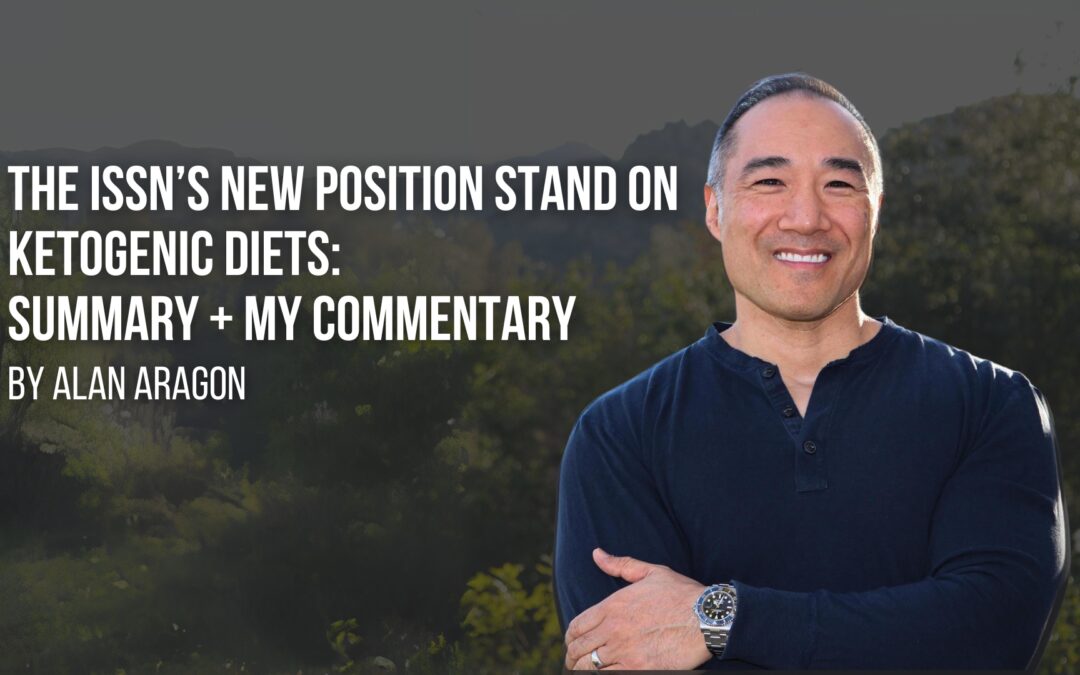If you’ve heard of the glycemic index (GI), chances are, you heard a smart-sounding person advise to stick to low-GI foods and avoid high-GI foods. The recent wave of hysteria about “glucose spikes” propagated by pseudoscientific gurus on social media has ushered a resurgence in the obsession with GI. Many people newer to the game are unaware that the influence of GI on health has been a perennial area of study in nutritional science since its inception in 1981 [1]. Low-GI carbohydrate sources have been touted as universally health-promoting and disease-preventive, and have also been hyped as protective against body fat gain. This is false, and we will briefly review the evidence (even if it hurts some feelings).
Before diving in, let’s establish definitions. GI is a ranking of a food’s ability to raise blood glucose levels. Specifically, GI is the glycemic response from a fixed amount of carbohydrate (50 grams) in a given food within a two-hour timeframe. This value is ‘indexed’ against a reference food (pure glucose or white bread, which is assigned a GI of 100). Low-GI foods have been arbitrarily given an upper cutoff value of 55 or below, moderate-GI values are 56 to 69, and high-GI foods are 70 and above. Glycemic load (GL) takes into account both the GI and the amount of carbohydrate in a given food (or dish). Although GL has been deemed more useful than GI, it’s still based on GI, which has some important limitations which we’ll discuss.
Several factors affect the consistency (and reliability) a food’s GI value, including variations in ripeness, physical form (i.e., whole versus blended or mashed), presence of other nutrients (i.e., fat, protein, and fiber), cooking method, processing, and acidity [2]. Adding to this variability, Matthan and colleagues [3] found that variations in glycemic response to the same reference foods within and between individuals varied 20 & 25%, respectively. This led the authors to conclude that, “These data indicate that there is substantial variability in individual responses to GI value determinations, demonstrating that it is unlikely to be a good approach to guiding food choices. Additionally, even in healthy individuals, glycemic status significantly contributes to the variability in GI value estimates.”
Despite the above issues, choosing low-GI carbohydrate sources is commonly purported to assist in body fat reduction and lowering cardiovascular disease risk. A big problem with this claim is that GI does not necessarily reflect food quality, nor does it consistently reflect a given food’s inherent capability for contributing to body fat gains. For example, ask yourself if the lower GI values of Snickers candy bars and full-fat ice cream make them more favorable for body fat control than high-GI fresh fruit such as pineapple and watermelon. The point is that GI (and even GL, as we will see) are needless distractions when judging the healthfulness of a given food or dish.
While it’s true that several studies have indeed shown the superiority of lower-GI diets over higher-GI diets for improving various health parameters, a common thread among this research is that it fails to equate macronutrition (protein, carbohydrate, fat) and fiber between the diets. In comparisons where these variables are properly equated, differences in GI/GL have no significant effect on body composition, cardiovascular risk factors, or insulin sensitivity [4,5]. In the most recent (and most rigorous) systematic review on this topic to date, the findings of Chekima and colleagues can be summarized as follows [6]:
- There were little to no differences in effect for change in body weight and body mass index (BMI) between low GI/GL diets to higher GI/GL diets for people with overweight or obesity.
- The evidence is very uncertain about the effect of low GI or GL diets on health-related quality of life.
- There was no evidence of a difference between low GI or GL diets compared to higher GI or GL diets for all-cause mortality.
- There was little to no differences between the two groups for change in body weight and BMI when comparing low GI/GL diets to any other diet.
- For glycemic control, insulin action, and cardiovascular risk factors, there were little to no differences when comparing low GI/GL diets with higher GI/GL diets or with any other diets.
So, since GI is an unreliable tool for improving or managing the aforementioned battery of health parameters, what’s more productive to focus on? Instead of judging carbohydrate sources on the basis of GI or GL, get a handle on your total daily carbohydrate target (this varies widely with individual preference, tolerance, and goals). Fulfill this target with a predominance of whole and minimally refined foods such as fruits, tubers, legumes, and whole grains. No need to completely avoid added sugars, but limit them to the constraints of your discretionary calories.
 Alan Aragon is the Chief Science Officer of the Nutritional Coaching Institute. With over 30 years of success in the field, he is known as one of the most influential figures in the fitness industry’s movement towards evidence-based information. Alan has numerous peer reviewed publications that continue to shape the practice guidelines of professionals, and the results of their clientele. He is the founder and Editor-In-Chief of Alan Aragon’s Research Review (AARR), the original and longest-running research review publication in the fitness industry.
Alan Aragon is the Chief Science Officer of the Nutritional Coaching Institute. With over 30 years of success in the field, he is known as one of the most influential figures in the fitness industry’s movement towards evidence-based information. Alan has numerous peer reviewed publications that continue to shape the practice guidelines of professionals, and the results of their clientele. He is the founder and Editor-In-Chief of Alan Aragon’s Research Review (AARR), the original and longest-running research review publication in the fitness industry.
References
- Jenkins DJ, Wolever TM, Taylor RH, Barker H, Fielden H, Baldwin JM, Bowling AC, Newman HC, Jenkins AL, Goff DV. Glycemic index of foods: a physiological basis for carbohydrate exchange. Am J Clin Nutr. 1981 Mar;34(3):362-6.
- Pi-Sunyer FX. Glycemic index and disease. Am J Clin Nutr. 2002 Jul;76(1):290S-8S.
- Matthan NR, Ausman LM, Meng H, Tighiouart H, Lichtenstein AH. Estimating the reliability of glycemic index values and potential sources of methodological and biological variability. Am J Clin Nutr. 2016 Oct;104(4):1004-1013.
- Karl JP, Roberts SB, Schaefer EJ, Gleason JA, Fuss P, Rasmussen H, Saltzman E, Das SK. Effects of carbohydrate quantity and glycemic index on resting metabolic rate and body composition during weight loss. Obesity (Silver Spring). 2015 Nov;23(11):2190-8.
- Sacks FM, Carey VJ, Anderson CA, Miller ER 3rd, Copeland T, Charleston J, Harshfield BJ, Laranjo N, McCarron P, Swain J, White K, Yee K, Appel LJ. Effects of high vs low glycemic index of dietary carbohydrate on cardiovascular disease risk factors and insulin sensitivity: the OmniCarb randomized clinical trial. JAMA. 2014 Dec 17;312(23):2531-41.
- Chekima K, Yan SW, Lee SWH, Wong TZ, Noor MI, Ooi YB, Metzendorf MI, Lai NM. Low glycaemic index or low glycaemic load diets for people with overweight or obesity. Cochrane Database Syst Rev. 2023 Jun 22;6(6):CD005105.





